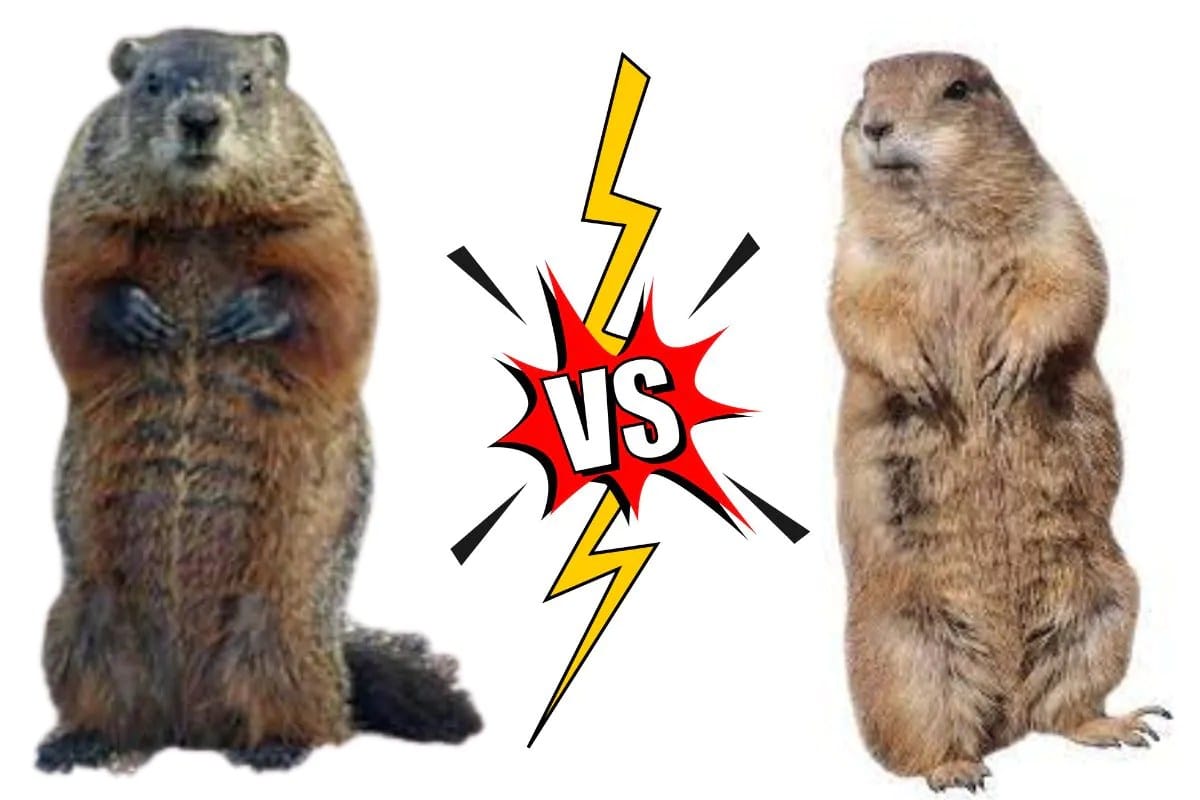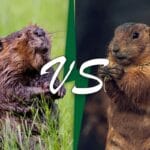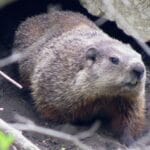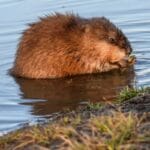Don’t be fooled by their furry exteriors! Woodchucks and beavers are often mistaken for each other, but these furry creatures are vastly different, from their habitat to their social structures. This guide will equip you with the knowledge to differentiate between these fascinating backyard dwellers.
Unveiling the Differences: A Closer Look
While both belong to the rodent family, comparing a woodchuck to a beaver is like comparing a gardener to an engineer – their skills and lifestyles are worlds apart. Let’s explore the key differences:
1. Home Sweet Habitat
- Woodchucks: Prefer sunny meadows and forest edges, digging impressive burrows with multiple entrances. These burrows provide shelter not only for themselves but also for other animals seeking refuge, like rabbits and foxes.
- Beavers: These aquatic architects are rarely found far from water. Look for them near lakes, ponds, and streams, where they build elaborate dams and lodges.
2. Size and Style
- Woodchucks: Imagine a furry football with legs! They’re on the smaller side, typically weighing 10-25 pounds, with short, stubby tails.
- Beavers: These are the heavyweights of the rodent world, often reaching up to 50 pounds! Their most distinctive feature is their large, flat, scaly tail, used for balance, swimming, and even as a warning signal.
3. A Matter of Taste
- Woodchucks: These herbivores are nature’s lawnmowers, happily munching on grasses, clover, and juicy fruits. Gardeners, beware!
- Beavers: Forget delicate greens; beavers are all about that bark! Aspen and willow trees are their favorites, supplemented by aquatic plants.
4. Social Butterflies vs. Lonesome Wanderers
- Woodchucks: Solitary creatures who prefer their own company, except during mating season. They communicate with distinctive whistle-like calls, which probably inspired the tongue twister “How much wood would a woodchuck chuck?”
- Beavers: Forget going it alone; beavers are all about family! They live in colonies, sometimes with as many as 12 individuals, working together to build and maintain their lodges and dams.
5. Impact on the Environment
- Woodchucks: While they might be a nuisance in the garden, woodchucks play an essential role in their ecosystems. Their burrows provide shelter for other animals, and their grazing habits can influence plant diversity.
- Beavers: These ecosystem engineers have a profound impact on their surroundings. Their dams create wetlands, providing habitat for a diverse array of plants and animals. This, in turn, attracts a bustling community of other creatures – fish, birds, amphibians – all finding refuge and sustenance in these beaver-made havens. These dams also act like natural flood control systems, slowing down water flow and preventing erosion.
6. Living in Harmony (Or Trying To!)
- Woodchucks: While generally harmless, woodchucks can become a nuisance if they decide your garden looks like a tasty buffet. Consider humane deterrents before resorting to traps, as they are simply trying to survive.
- Beavers: Their industrious dam-building can sometimes lead to unintended flooding or tree damage. However, rather than viewing them as pests, we should appreciate the vital role they play in maintaining healthy ecosystems.
7. Are Woodchucks and Badgers the Same?
This is another common point of confusion! Here’s a quick breakdown:
| Feature | Woodchuck | Badger |
|---|---|---|
| Family | Sciuridae (Squirrels) | Mustelidae (Weasels, Otters) |
| Appearance | Chunky, brown, short bushy tail | Stocky, black & white face |
| Diet | Herbivorous | Carnivorous |
| Behavior | Diurnal, often in small groups | Nocturnal, solitary |
Beyond the Basics:
Understanding the difference between a woodchuck and a beaver is crucial not only for nature enthusiasts but also for homeowners dealing with potential property damage. By learning to identify these creatures and appreciate their unique roles in our environment, we can foster a more harmonious relationship with the natural world.
Why is a groundhog called a woodchuck?
It’s true! The animal we often call a groundhog has another name: the woodchuck. This might seem odd, especially since they don’t have a reputation for chucking wood. The answer lies in history and language:
- Algonquin Origins: The term “woodchuck” comes from the Algonquin word “wuchak,” used by Native Americans living in the Northeastern United States to describe this burrow-dwelling creature.
- Linguistic Evolution: As English settlers interacted with both the Algonquin people and these animals, the name gradually transformed from “wuchak” to “woodchuck.”
- Regional Variations: Interestingly, “groundhog” is more common in North America, while “woodchuck” prevails in British English, showcasing how language evolves differently across regions.
So, while “groundhog” highlights the animal’s burrowing habits, “woodchuck” offers a glimpse into the past, reflecting a deeper story of cultural exchange and the evolution of language.
The Groundhog (or Woodchuck): A Closer Look
- Scientific Name: Marmota monax
- Family: Sciuridae (Squirrels)
- Habitat: Eastern and central North America
- Known For: Burrowing, hibernation, and, of course, Groundhog Day!
- Other Names: Whistle pig (due to their high-pitched alarm calls) and land beaver (referring to their habitat and some beaver-like behaviors).
Woodchuck vs. Beaver: More Than Meets the Eye
There’s always more to learn about these fascinating creatures. Ongoing research continues to unveil the complexities of their communication, social structures, and the long-term impacts of their presence on our landscapes. So, next time you encounter a woodchuck or a beaver, take a moment to appreciate the unique roles they play in the intricate tapestry of the natural world. Did you know that there is a wolf spider named after a cranberry bog? And woodchucks have a variety of interesting names, such as groundhogs.











